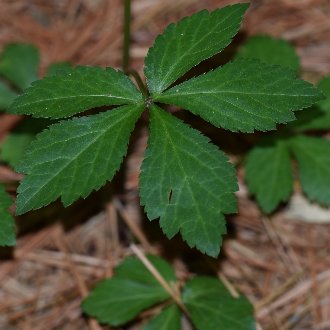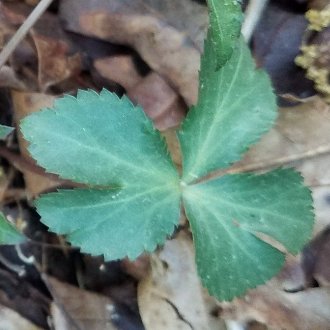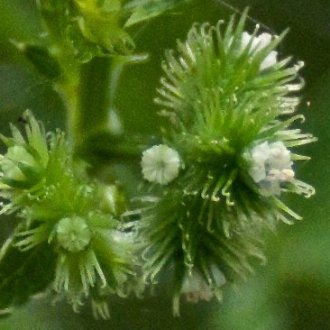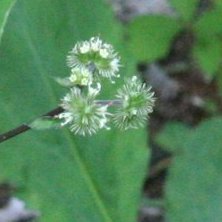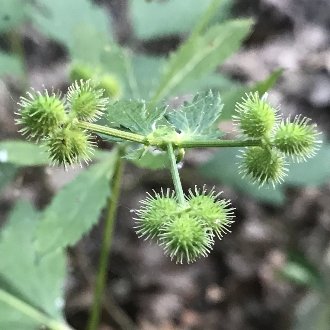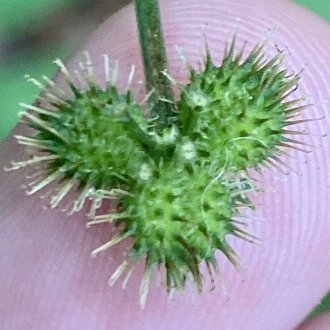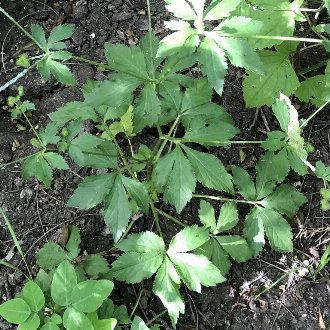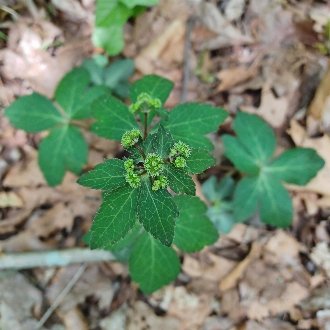Canadian Blacksnakeroot vs Small's Blacksnakeroot
Sanicula are notoriously hard to distinguish. These two species can be confused where their ranges overlap, as both tend to have 3 leaflets with similar shapes, tiny bright white flowers, and both can be found in deciduous forests as well as mixed pine-hardwood forests. They can be easily distinguished by differences in their inflorescence, and, especially during the growing season, by differences in leaf color and texture shape. S. canadensis is more likely on disturbed sites and ranges into slightly wetter and sunnier sites, whereas S. smallii prefers sites with richer leaf litter, and also ranges onto slightly drier and shadier sites.
Canadian Blacksnakeroot (Sanicula canadensis) | Small's Blacksnakeroot (Sanicula smallii) |
A biennial of rich woodlands, native to eastern North America. | The only perennial Sanicula in the eastern US, found in the southeast. |
Overwintering basal leaves may be slightly bluish but most leaves during the growing season are less bluish. Leaves thinner. Less contrast between vein color at center of leaf and the rest of the leaf. Photo © Blake Bringhurst, CC BY 4.0. | Leaves thicker and tougher, average more bluish in color, with central veins markedly paler, especially close to the center of each leaf. Photo © Leila Dasher, CC BY 4.0. |
Flowers are sparse in each inflorescence; inflorescence visually dominated by bur structure at the ovary of each perfect/pistillate flower. Photo © Niki Robertson, CC BY 4.0. | Inflorescence forms a globe due to the more numerous flowers. Photo © runcator, CC BY 4.0. |
Fruits average slightly smaller, and are on pedicels 1-1.5mm long. Photo © lanechaffin, Public Domain. | Fruits average slightly larger, and are sessile, attached directly without a pedicel. Photo © Emily Summerbell, CC BY 4.0. |
Although it can occur in areas with dense leaf or needle litter, relatively more likely on disturbed sites with exposed soil. Ranges onto slightly sunnier and moister sites. Photo © lanechaffin, Public Domain. | Usually limited to sites with significant leaf litter. More common on sites that have not experienced disturbance as recently. Ranges onto slightly shadier and drier sites. Photo © Rene, CC BY 4.0. |
References & External Resources
These short lists show only links helpful for ID. For a complete list of references and resources also covering other aspects of ecology, visit the links section of the full article on each plant, which is the first entry here.



